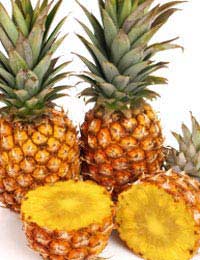
Tropical and exotic fruits refer to fruits grown outside of the UK such as mangoes, papayas and coconuts. Bananas and pineapples also fall into this category but they are more common and sold readily in supermarkets so have lost their exotic status. Mangoes and papayas are becoming increasingly common in the UK as consumers demand a greater variety of fruit. Health-conscious shoppers are also buying exotic fruits that have been described as superfoods, such as mangoes because of their health-boosting properties.
Jump To...
Common Exotic and Tropical Fruits Include:
- Coconuts – when under-ripe the milk can be drunk from the fruit and when allowed to ripen its sweet flesh can be eaten raw or used in cooking
- Figs – these tasty fruits are quite common in the UK and are delicious dried, or used in cooking
- Kiwi – common in the UK these fruits have a fuzzy brown skin and are either yellow or green inside
- Mango – this delicious fruit is packed with vitamin C and is considered a superfood
- Papaya – has soft, succulent orange flesh and papaya fruit has a slightly honey taste
- Pineapple – delicious and loaded with vitamin C, this was grown by the Victorians in glasshouses in the UK
What’s Next for Exotic Fruits?
Exotic fruits that could be in the supermarkets soon include cherimoya, a sweet, creamy, sub-tropical fruit grown in New Zealand. Its flavour has similarities to pineapple, papaya, passion fruit, banana, mango and lemon. There’s also the chikoo, native to tropical regions in and around India. This is a fleshy, brown fruit the size of a small tomato. Its flavour bears similarities to cinnamon, apple, and pear.
Other tropical fruits to look out for include:
- Black sapote – also known as chocolate pudding fruit or black persimmon. It has green skin and tastes like an exotic chocolate with nutty undertones
- Breadfruit – it tastes and looks like bread if it is cut open before it has a chance to ripen. Once ripe, it has a consistency similar to a mango
- Feijoa – this fruit is quite sweet, thick, and juicy. It is creamy white inside. The seeds are also edible
- Jackfruit – this is the largest fruit in the world. It is prickly on the outside with hundreds of edible cells the size of apples on the inside. They can have a very strong smell
- Lychees – these are sweet and succulent with a juicy clear flesh
- Mamey – this fruit is soft, smooth, thick, and creamy. It is similar to sweet potato and avocado in texture
- Plantains – these look just like bananas, but they grow upwards in the tree and can be eaten when unripe
- Sapodilla – this is a sweet creamy fruit with brown skin about the size of a small tomato. It has a fruity and spicy flavour, similar to cinnamon, pear, banana, melon and apple when ripe
- Star fruit – also known as carambola, these are juicy, crisp, and sweet although slightly tart
Exotic Fruit and Food Miles
Food miles are generated when polluting transport is used to produce, sell or buy food. Air-freighting food across the world is highly unpopular in green circles, and The Soil Association is considering removing the organic status of food grown organically, if it has been flown long distances to the UK to be sold.
Food miles account for 1.8 per cent of the UK’s CO2 emissions. Air-freighting food is increasing and most of the time food is freighted that could be grown in the UK. Flying strawberries from New Zealand to the UK for example, is both unnecessary and costly.
Exotic fruits form an important part of a balanced diet however, and provide a tasty alternative to eat alongside fruit grown in the UK. There are plenty of exciting varieties to try, and plenty more recipes that call for the use of tropical fruits.


Where can I get black sapote fruit from I the uk ?
Is it possible to buy black sapote seedlings in the UK? I cannot find any links on the internet except for USA and Australia
@Rebecca – can you not buy directly from the USA and have them shipped?
This website is so helpful for my homework.